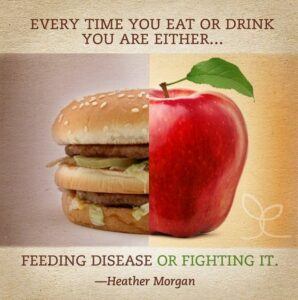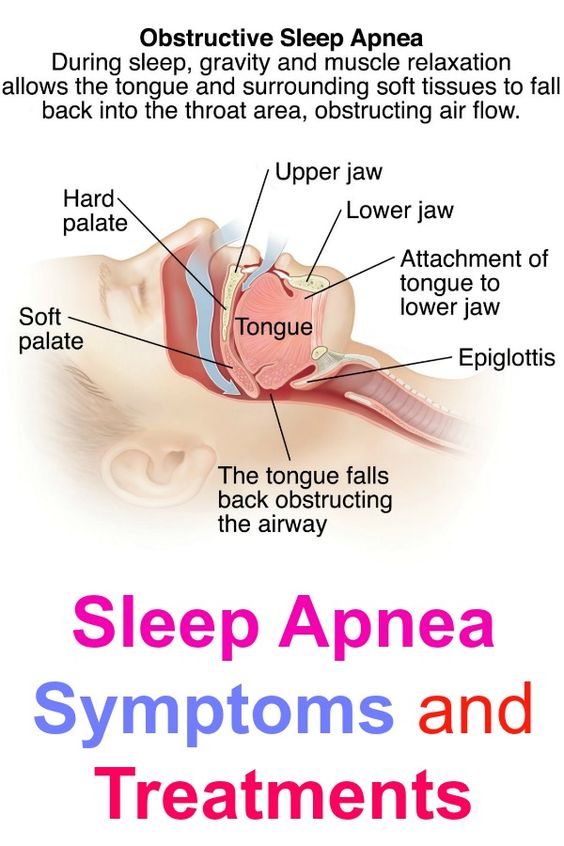Inflammation is a very important part of the immune system’s response to injury and infection. It is the body’s means of triggering the system to heal and repair injured tissue, additionally to defend itself against foreign invaders, like viruses and microorganisms such as bacteria. Without inflammation as a defensive response, wounds would degenerate, and infections could become deadly. This is what I was taught in school about inflammation. However today we know a lot more about inflammation; that it can be the catalyst for some major health issues. Today we know about the dangers of inflammation.
What is inflammation and what causes it
Inflammation is a method where the body’s white blood cells and substances they manufacture shield us from infection from injuries and with foreign organisms, like microorganisms and viruses.
When inflammation occurs as the result of an injury, chemicals from the body’s white blood cells are released into the blood or affected tissues to protect the body from foreign substances. This discharge of chemicals will increase the blood flow to the locality of injury or infection, and should end in in redness and heat. Some of the chemicals cause a leak of fluid (known as pus) into the tissues, resulting in swelling. This protecting method could stimulate nerves and cause pain.
When inflammation occurs as the result of bacteria or viruses, the white blood cell is attracted to the bacteria because proteins called antibodies
have marked the bacteria for destruction. These antibodies are explicitly for disease-causing microorganisms and viruses. When the white blood cells catches the microorganisms, they proceed “eating” it during a method known as phagocytosis. For a video demonstration of this process, click this link.
What are the symptoms of inflammation
Symptoms of inflammation include flu-like symptoms such as: headaches, fever, chills, loss of appetite, fatigue/loss of energy, muscle stiffness.
If it involves a joint: redness, Joint pain, swollen joint that can be warm to the touch, Joint stiffness, loss of joint function.
Keep in mind that all of these usually don’t occur at the same time. It can be one or a combination of several.
If it involves a pathogen (a bacterium, virus, or other microorganism that can cause disease), the inflammation mainly makes the body temperature rise so the pathogens are not able to replicate themselves.
Something to think about – Our bodies are constantly covered (inside and out) by bacteria. Some are good for us, others are harmless and still others can make us sick. I cover good and bad bacteria in my article: https://universal-health-products.com/what-are-the-health-benefits-of-probiotics/. For example, Staphylococcus aureus, (the most dangerous of all the many common staphylococcal bacteria) is frequently found on our skin and respiratory tract. It does not continually cause illness, but can infect the skin or lungs. There are more bacteria in and on our bodies than there are people on the Earth. Our defense system has it work cut out for it!
The dangers of inflammation
In a healthy scenairo, inflammation serves as a good friend to our body. But if immune cells start to overreact, inflammation can be totally directed against us. As I like to say: too much of a good thing is a bad thing. This is what is called chronic inflammation. This type of harmful, inflammation can have a number of causes, including a virus or bacteria, an autoimmune disorder, sugary and fatty foods, or the way you handle stress.
Just to clarify, an autoimmune disorder or disease is a condition in which our immune system mistakenly attacks our body. In such a case, the immune system mistakes part of the body, like our joints or skin, as foreign. The military and law enforcement agencies would call this “friendly fire.” This is when a soldier or police officer is stuck by a bullet shot by one of their own members.
Here are a few ways chronic inflammation can affect our health, both in the long and short run.
It can play havoc on our gut
Many of the body’s immune cells cluster in the neighborhood of the intestines. Most of the time, those immune cells ignore the trillions of healthy bacteria that live in the gut. But in some cases, that tolerance seems to be broken and the immune cells begin to react to the bacteria, creating this chronic inflammation situation.
The immune cells can attack the digestive tract itself, an autoimmune condition known as inflammatory bowel disease (IBD), which includes ulcerative colitis and Crohn’s disease. The symptoms embody frequent and excessive discharging of the bowels (diarrhea), cramps, ulcers, and may even require surgical removal of the intestines. Doctors are not specifically certain why some individuals get IBD, but genetics, environment, antibiotics, diet, and stress management all seem to play a role. This can be a serious situation.
It can damage your joints
When inflammation happens within the joints, it’s can cause serious damage. One joint-damaging condition is rheumatism inflammatory arthritis (RA)—another example of an autoimmune disorder that seems to possess a genetic segment, but is additionally coupled to smoking, a lack of vitamin D, and other risk factors. A 2013 Yale University study, for example, found that a salty diet may contribute to the development of RA.
People with RA live through pain and stiffness in their inflamed joints. But as a result of the immune response is not restricted to the joints, they’re also at higher risk for problems with their eyes and other body parts.
Psoriatic arthritis additionally involves inflammation within the joints, and its symptoms are similar to those of RA. But additionally to painful, stiff joints, people with this condition might also encounter changes within the nails, like roughness. Most people with psoriatic arthritis first develop psoriasis, another autoimmune condition, on their skin. Around 30% of people with psoriasis are thought to develop psoriatic arthritis, and they may be more likely to do so if their skin psoriasis affects their nails.
It can cause heart disease
Any area of your body that has been wounded or broken will trigger inflammation, even the insides of blood vessels. The formation of fatty plaque within the arteries will trigger chronic inflammation. The fatty plaques attract white blood cells, grow larger, and might develop blood clots, which might cause a coronary heart attack.
Obesity and unhealthy consumption of food will increase inflammation within the body, but even otherwise healthy people who experience chronic inflammation because of an autoimmune disorder—such as rheumatoid arthritis, psoriasis, or celiac disease—appear to have a stronger risk of cardiovascular disease, regardless of their weight or eating habits.
It will result in a higher risk of cancer
Chronic inflammation has been linked to cancers of the lung, esophagus, cervix, and digestive tract, among others. A 2014 Harvard University study found that highly overweight teenagers with high levels of inflammation had a sixty three percent (63%) increased risk of developing large intestine cancer throughout adulthood compared to their slimmer peers. The inflammation could also be because of extreme overweight , a chronic infection, a chemical irritant, or chronic condition; all have been linked to a higher cancer risk.
It can impair sleep
In a 2009 study from Case Western Reserve University, those that reported sleeping additional or fewer than average had higher levels of inflammation-related proteins in their blood than people who said they slept about 7.6 hours a night. This analysis solely established a correlation between the two (2) (and not a cause-and-effect), so the study authors say they can’t be sure whether inflammation triggers long and short sleep duration or whether sleep duration triggers inflammation. It’s also probable that a unique underlying issue, like chronic stress or disease, causes both. Shift work has additionally been found to extend inflammation within the body.
It can damage your lungs
When inflammation transpires in the lungs, it can cause fluid accumulation and narrowing of the airways, making it difficult to breathe. Infections, asthma, and chronic obstructive pulmonary disease (COPD) (which includes pulmonary emphysema and chronic bronchitis) are altogether initiated by inflammation within the lungs.
Smoking, exposure to air pollution or household chemicals, being overweight, and even consumption of cured meats have been linked to lung inflammation.
It can make weight loss more difficult
Obesity is may be a major reason behind inflammation within the body, and losing weight is one among the foremost effective ways in which to fight it. But that’s not always easy, because elevated levels of inflammation-related proteins can also make weight loss more difficult than it should be. For one, chronic inflammation can influence hunger signals and slow down metabolism, so one may eat more and burn fewer calories. Inflammation may increase insulin resistance (which raises your risk for diabetes) and has been coupled with future weight gain.
It can damage bones
Inflammation throughout the body will interfere with bone growth and even promote accumulated bone loss. Researchers suspect that inflammatory markers within the blood interrupt “remodeling”—an in progress method during which previous, blemished fragments of bone are replaced with new ones.
Inflammation of the digestive tract (as with inflammatory intestine disease) are often particularly harmful to bone health, because it can prevent absorption of important bone-building nutrients such as calcium and vitamin D. Another disease of an inflammatory nature, rheumatoid arthritis, also can have implications as a result of how it limits people’s physical activity and might keep them from engaging in weight-bearing, bone-strengthening exercises.
It can affect your skin
The effects of inflammation aren’t just internal: They can also be reflected in the skin. Psoriasis, for instance, is an inflammatory condition that happens once the defense system causes skin cells to grow too quickly. A 2013 study published in JAMA Dermatology
suggested that losing weight may facilitate patients with psoriasis obtain relief, since obesity contributes to inflammation.
Chronic inflammation has conjointly been shown to contribute to quicker cell aging in animal studies, and a few experts believe it conjointly plays a part (along with UV exposure and other environmental effects) within the formation of wrinkles and visual signs of aging.
It’s linked with depression
Inflammation within the brain could also be coupled to depression, consistent with a 2015 study printed in JAMA Psychiatry; specifically, it should be accountble for depressive symptoms like low mood, lack of appetite, and poor sleep. Previous analysis has found that individuals with depression have higher levels of inflammation in their blood, as well.
It can even damage gums
Inflammation may also inflict mayhem on your mouth in the fashion of periodontal disease, a chronic inflammation of the gums caused by bacterium accumulation. This infection causes gums to recede and also the bone structure that surround the teeth become weakened or damaged. Brushing and flossing often stop periodontitis, and one 2010 Harvard University study found that consuming omega-3 fatty acids (such as fish or fish oil), anti-inflammatory foods may additionally assist.
Periodontal disease doesn’t just affect oral health, either. Studies show that inflammation of the gums is coupled to cardiovascular disease and congnitive issues also, since bacteria in the mouth may also trigger inflammation elsewhere in the body. Oral hygiene is important for the whole body.
How to prevent chronic inflammation
One can control — and even reverse — inflammation through a healthy, anti-inflammatory lifestyle. Someone with a case history of health issues, such as heart disease or colon cancer, should talk to their doctors about lifestyle changes that support preventing disease by reducing inflammation.
Follow the tips below for reducing inflammation in your body:
Fill up on anti-inflammatory foods
Your food selections are even as necessary as the medications and supplements you mightbe taking for overall health since they’ll shield against inflammation. An anti-inflammatory diet emphasizes foods that reduce inflammation. There are anti-inflammatory cookbooks available on Amazon that features anti-inflammatory recipes. To take a look click here.
Eat more fruits and vegetables and foods containing omega-3 fatty acids. Some of the best sources of omega-3s are cold water fish, such as salmon and tuna, and tofu, walnuts, flax seeds and soybeans. Other anti-inflammatory foods embody grapes, celery, blueberries, garlic, olive oil, tea and some spices (ginger, rosemary and turmeric). More on turmeric in my article https://universal-health-products.com/what-are-the-health-benefits-of-turmeric-curcumin/
The Mediterranean diet is an excellent example of an anti-inflammatory diet. This is because of its concentration on fruits, vegetables, fish and whole grains, and limits on unhealthy fats, such as red meat, butter and egg yolks as well as processed and refined sugars and carbs.
Cut back or eliminate inflammatory foods altogether
“An anti-inflammatory diet additionally limits foods that promote inflammation. Inflammatory foods consist of beef (red meat) and ingredients with trans fats, such as margarine, corn oil, deep-fried foods and most processed foods.
Control the blood sugar
Limit or avoid simple and processed carbohydrates, such as white flour, white rice, refined sugar and anything with high fructose corn syrup.
One simple rule to follow is to avoid white foods, such as white bread, rice and pasta, as well as foods made with white sugar and flour. Build meals around lean proteins and whole foods high in fiber, such as vegetables, fruits and whole grains, such as brown rice and whole wheat bread. Check the labels and make certain that “whole wheat” or another whole grain is the initial ingredient.
Make time for exercise
Notice I said “make time.” With the busy schedules of today, who has time for exercise? Nobody! But we have to push room into the schedule somehow. It can be a matter of life or death in some cases.
Regular exercise is a superb means to prevent inflammation. Make time for 30 to 45 minutes of aerobic exercise and 10 to 25 minutes of weight or resistance training at least four to five times per week.
If overweight-lose it
People who are overweight have more inflammation. Losing weight may decrease inflammation.
If fat cells will contribute to chronic inflammation, then it’s reasonable to expect that weight gain, especially in the form of fat tissue, also contributes to chronic inflammation. As we put on weight, some fat cells expand beyond their capacity while trying to do their job storing our extra calories as fat. When this happens, they turn on and add to the inflammation already present in our bodies. At this time, these cells aren’t just fat storage warehouses—they’re like little inflammation factories, sending out signals to activate the immune system. Losing weight therefore allows the fat cells to shrink back to a more normal size and turns off the signals that trigger chronic inflammation.
A study showed that chronic inflammation is linked to weight gain. Researchers followed people over nine years and monitored things like their weight gain and blood levels of C-reactive protein (CRP), a chemical that shows up when the immune system is activated.
They found one thing interesting: Weight increase was associated with additional inflammation, and the relationship was linear. This means that as a person’s weight increased, so did the level of CRP in their blood. This relationship between weight and inflammation suggests losing weight will help the cause.
Manage the stress
Cortisol, the so-called “stress” hormone, wears many other hats, including regulating the immune response. Reducing stress helps to keep hormones like cortisol under control and that, in turn, helps lower inflammation. More on cortisol in my article https://universal-health-products.com/all-about-the-endocrine-system/
Get the Proper amount of Sleep
Lack of sleep makes the body ripe for infection, whereas additional sleep has the alternative result. A review of several studies published in 2008 found that sleeping less than eight hours a night was linked to weight gain. There is a complex but harmonious dance occurring in our bodies during restful sleep; this strengthens our immune system in a good way. For more detail on the benefits of sleep, see my article https://universal-health-products.com/the-importance-of-sleep-for-health/
Inflammation is part of our body’s defense system that protects our bodies. But it can play havoc on our bodies if it malfunctions. But we can defend our defense system by taking preventative measures. After doing that, if any of the above symptoms commence, see your physician without delay.
Please feel free to leave a question, concern or comment below.
Good health!






 who sleep on their backs, gravity can cause the tongue to fall back. This narrows the airway, which reduces the amount of air that can reach the lungs. This narrowed airway causes snoring by making the tissue in back of the throat vibrate as we breathe.
who sleep on their backs, gravity can cause the tongue to fall back. This narrows the airway, which reduces the amount of air that can reach the lungs. This narrowed airway causes snoring by making the tissue in back of the throat vibrate as we breathe.